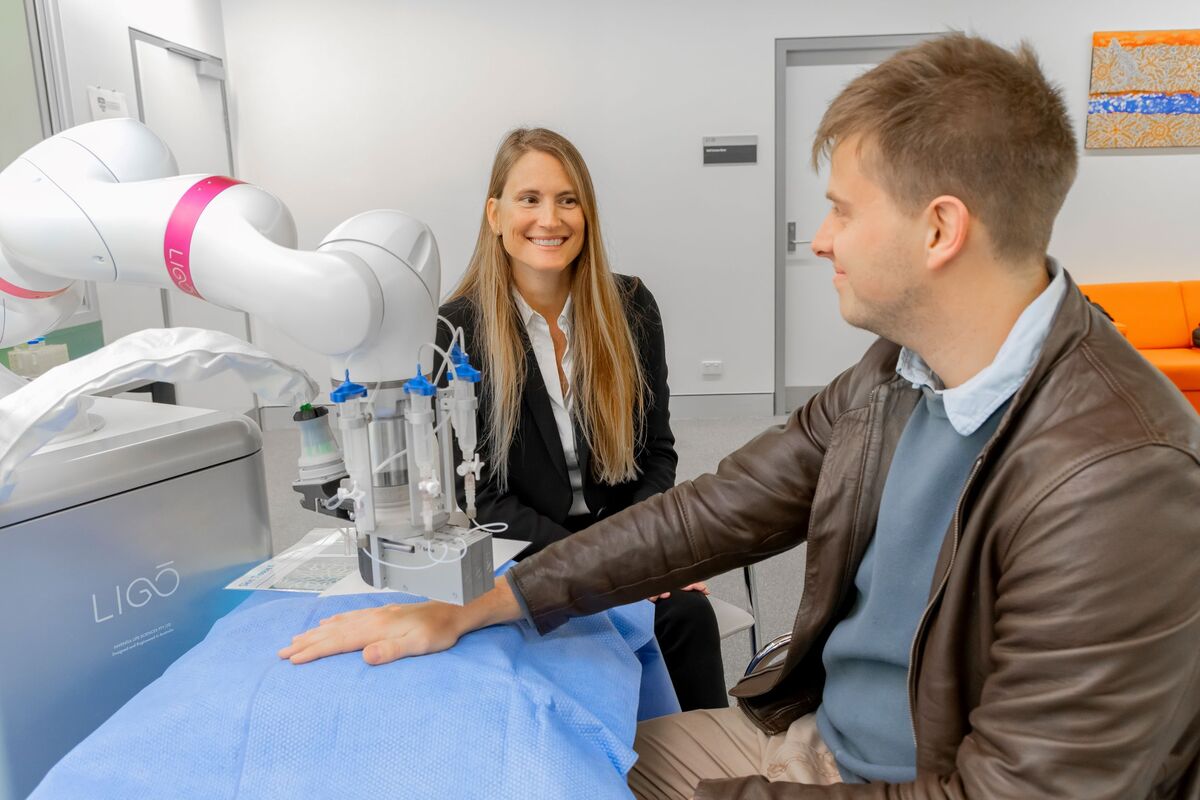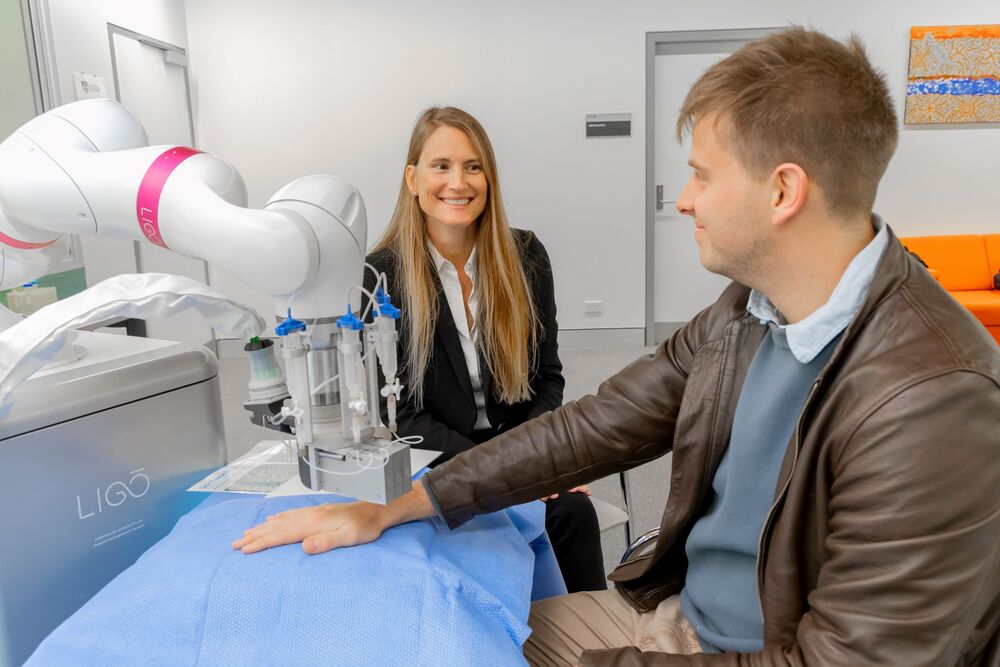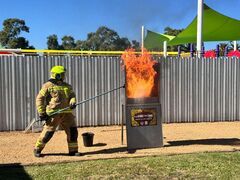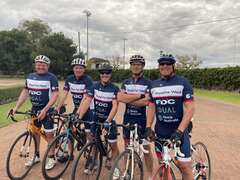From printer to patient - 3D skin breakthrough
Kristin Murdock
25 May 2025, 7:40 AM
 Dr Jo Maitz with Ms Rebecca Torbruegge at Concord Burns Unit.
Dr Jo Maitz with Ms Rebecca Torbruegge at Concord Burns Unit.NSW’s Concord Burns Unit supports around two-thirds of the state and the ACT, servicing 11 health districts and a population of over 5.5 million.
Patients from remote areas, including towns like ours in the western plains, often rely on the centre for specialist treatment.
In a medical breakthrough that could transform burns care, researchers at Concord Hospital in Sydney have developed a world-first technique to 3D print skin using a patient’s own cells then apply it directly to their wounds.
The technology is currently undergoing clinical trials and is already showing promising results in speeding up healing and reducing pain for patients, including those from regional NSW.
Developed by Australian biotech firm Inventia Life Science, in collaboration with Concord Hospital’s Burns Unit and its Skin Laboratory, the new technique uses the Ligo Surgical Robot to print biomaterials directly onto burn wounds.
The precision of this process helps surgeons rebuild lost tissue after trauma with unprecedented accuracy.
Minister for Health Ryan Park described the innovation as “life-changing technology which can make a world of difference to people with burns injuries and soft tissue loss,” adding that it “further
enhances Concord Burns Unit’s reputation as a developing centre of excellence for burns care globally.”
He said the 3D skin printing trial offers real hope for people who experience serious burns, which often lead to chronic complications such as infection, scarring and restricted mobility.
“We know people with serious burns face a range of medical complications,” he said.
“This breakthrough offers a promising new approach to accelerate recovery, reduce pain, and improve long-term outcomes for patients.”
According to the Australian Institute of Health and Welfare, there were 5,500 hospitalisations due to thermal injuries across the country in 2021–22, equating to around 22 per 100,000 people.
Deaths from thermal causes (burns) totalled 120 in the year prior.
A large proportion of these cases are from regional areas, where the risk of house fires, farm accidents and workplace burns is higher and emergency treatment options can be limited.

Dr Joanneke Maitz demonstrates the 3D printing process that will be used on patients with burn injuries.
The clinical trial underway at Concord uses skin printing on surgically created wounds which are generated when skin grafts are harvested to treat actual burn injuries to test safety and effectiveness.
If proven suitable, the next step will involve direct printing onto active burns, including deeper and more complex wounds.
Minister for Medical Research David Harris said the project was a prime example of how government investment in health innovation was improving outcomes.
“Supporting our innovators and their technologies through the NSW Medical Devices Fund is just one of the unique ways we are seeing enhanced interventions,” he said.
“This innovative and life-changing approach aims to make healing more consistent, reduce the need for additional surgeries, and improve patient outcomes.”
The project has received $3.47 million in funding from the NSW Government’s Medical Devices Fund, helping Inventia Life Science to refine and expand the use of the Ligo Surgical Robot.
Government Spokesperson for Drummoyne Mark Buttigieg said the innovation was a testament to the expertise within Australia’s burns treatment community.
“This world-first advancement is a testament to the skill and dedication of the team here at the Concord Burns Unit.
"Through their efforts, Australia has achieved worldwide recognition for our ability to treat people with severe burns,” he said.
Local MP Jason Yat-Sen Li chipped in to say that the Burns Unit had already built a strong global reputation after treating victims of the 2002 Bali bombings.
“The team have achieved remarkable outcomes for some of our most seriously injured burns patients, here at home, as well as through their significant research efforts,” he said.
“These efforts have now resulted in world-first technology like 3D printed skin.”
As trials continue, the medical community is hopeful that this cutting-edge technology will soon become a standard treatment option, particularly beneficial for rural and regional patients who face long
travel times and limited access to burns specialists.
More details can be found here.



